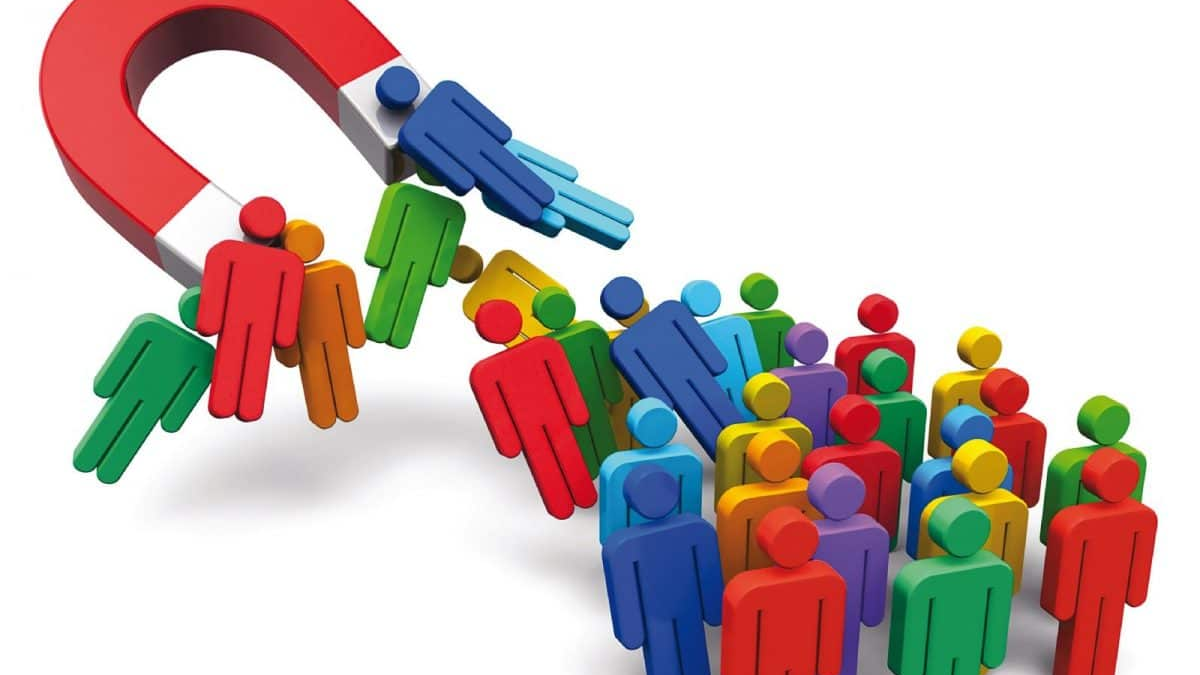One of the most common questions is whether it is more complex to capture new customers or retain existing ones. Imagine a businessman who, instead of making the most of the oranges he already had in his basket, insisted on harvesting more and more oranges.
Sometimes when we try to harvest new oranges we continually forget to squeeze the ones we have on hand and they rot.
This parody illustrates how many companies focus excessively on attracting new customers without realizing that retaining existing customers can be just as important, if not more so.
Capturing customers: a constant challenge
Attracting new customers involves attracting people who have not yet interacted with your business. This process can be costly and requires effective and well-targeted marketing strategies. SMEs They must invest in advertising, promotions and, in many cases, improving their online presence to stand out in a competitive market.
A client of ours, Raul, owner of a chain of natural stores, is a clear example of this challenge. Raul was always looking for new ways to attract customers. He invested in social media advertising, participated in local fairs and markets, partnered with clubs and offered attractive discounts.
However, despite his efforts, many of these initiatives did not result in repeat sales. Raul found himself in an endless cycle of acquiring and losing customers, which resulted in constant resource expenditure. The team was so focused on attracting more and more customers that they had no focus on retention or the experience of repeat customers.
Before continuing with the story, I would like you to take away some indicators to measure the effectiveness of customer acquisition:
- Customer Acquisition Cost (CAC): How much it costs to acquire a new customer.
- Conversion Rate: The percentage of prospects that become customers.
- Return on Investment (ROI) in Marketing: The profit obtained in relation to the money invested in marketing campaigns.
- Number of New Customers: The number of new customers in a specific period.
- Raul’s conversion rate and number of new customers indicators were very good, but that was not sustained over time, which affected his return on investment.
Customer loyalty: a long-term investment
On the other hand, customer loyalty refers to keeping existing customers and getting them to buy again. This process can be less costly in the long run and often results in a higher return on investment. Loyal customers not only buy more frequently, but they also tend to spend more and recommend the business to others.
After analyzing Raul’s situation, we decided to shift our focus to loyalty. We implemented a loyalty program that offered discounts and rewards to frequent customers. We also started sending personalized emails with special offers and news about new products. Over time, Raul noticed a significant increase in repeat sales and a reduction in new customer acquisition costs.
Key indicators for measuring customer loyalty include:
- Customer Retention Rate: The percentage of customers who continue to purchase over a specific period.
- Customer Lifetime Value (CLV): The total revenue expected from a customer during their relationship with the company.
- Repurchase Rate: How often customers return to purchase.
- Churn Rate: The percentage of customers who stop purchasing or go to the competition.
What are the benefits of customer loyalty?
Costs reduction: It is cheaper to retain an existing customer than to acquire a new one. Marketing and advertising costs are significantly lower when focusing on customer retention.
Increase in customer value: Loyal customers tend to spend more over time. As they trust the brand more, they are willing to make larger purchases more frequently.
Recommendations and word of mouth marketing: Satisfied and loyal customers are more likely to recommend the brand to their friends and family, generating new customers at no additional cost.
Income stability: Customer loyalty provides a steady source of revenue, which helps the company better plan and manage its finances.
Valuable feedback: Loyal customers are more willing to provide constructive feedback, allowing the company to continually improve its products and services.
What is more complex?
Determining which of the two processes is more complex depends on the specific context of each company. Attracting new customers can be more difficult in saturated markets or when you have a limited marketing budget. However, retaining customers can also be complicated if you don’t have an adequate strategy to maintain their interest and satisfaction.
What is more useful?
In terms of utility, customer loyalty often offers more long-term benefits. Loyal customers not only generate recurring revenue, but can also become brand ambassadors, attracting new customers through referrals. For SMEs, where resources are limited, focusing on loyalty can be a more sustainable and cost-effective strategy.
Both customer acquisition and customer loyalty are essential processes for the success of an SME. However, customer loyalty tends to offer greater benefits in the long term. Raul’s story is a clear example of how a change of approach can transform a business, reducing costs and increasing customer loyalty. SMEs must find a balance between both strategies, adapting them to their specific needs and resources in order to achieve sustainable growth.
Digital Marketing Specialist, Business Strategies and Sales @juliangonzalez77
Source: Ambito
David William is a talented author who has made a name for himself in the world of writing. He is a professional author who writes on a wide range of topics, from general interest to opinion news. David is currently working as a writer at 24 hours worlds where he brings his unique perspective and in-depth research to his articles, making them both informative and engaging.




